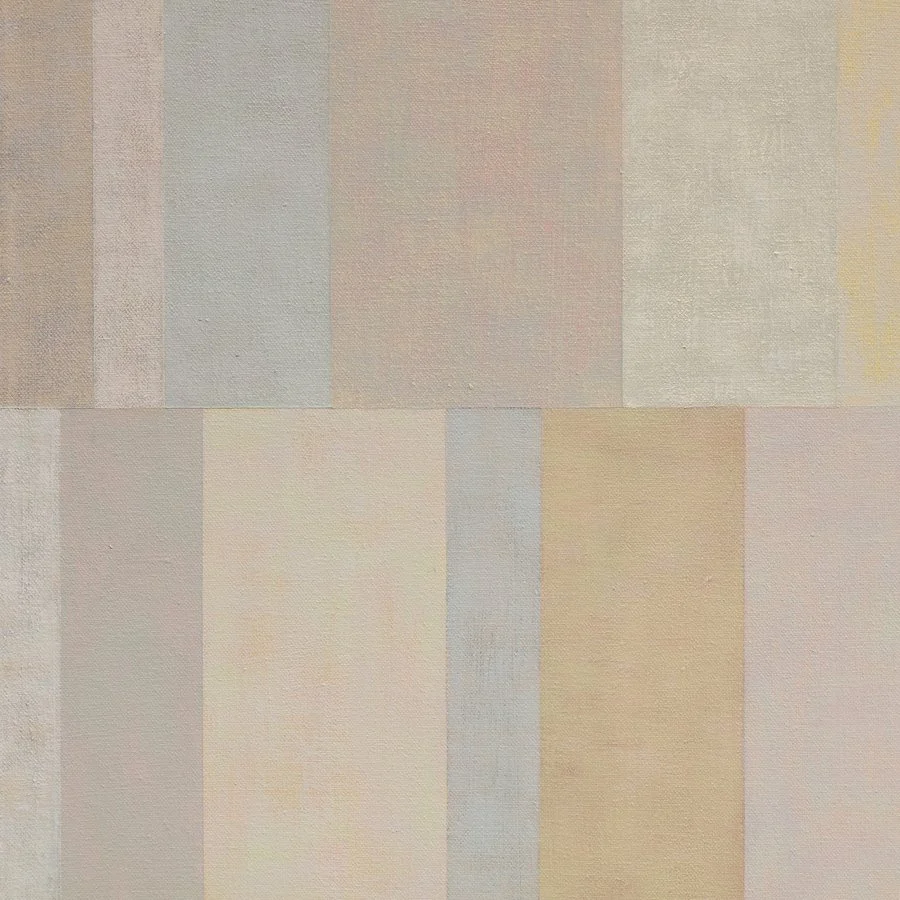Yesterday I was invited into a fourth year painting class at OCAD University to critique the students' work. At the end of the class, one of the students asked (and I paraphrase), "What's the best way to learn to paint?". I remember so clearly how I felt at school, desperately wanting someone - anyone! - to just tell me how to paint. There seemed to be so many talented painters, so many with much greater skill than I had, and I wanted that elusive, mythical manual I was sure existed somewhere that would give me the rules, the lessons, the definitive steps to becoming a great painter. It took me four years of art college to finally realize that no one can teach you how to paint.
Admittedly, there are a few technical matters when it comes to materials, but remarkably few, and really, the only way to learn to paint is to PAINT. Someone can teach you how THEY paint, but you'll never figure out how YOU paint, unless you, well, paint and paint and paint and paint. So often a painter's work is interesting simply because of the way they apply the paint -- a unique way, that they figured out themselves.
The most helpful advice I have learned so far can be boiled down to a few points:
1. Experiment with a full range of different media. Some media just doesn't suit your hand, your vision, your natural pace. You need to find a medium and process that suits you, and no one can figure that out for you. (Acrylic paint seemed to be most people's choice at my art school, and I fought with it for years, until I finally tried oil paint one day and became a better painter overnight.)
2. Experiment with a range of applications. A great way to start is to try to copy some of your favorites. I read a great interview with Elizabeth Murray in her MOMA retrospective catalogue in which she describes how trying to copy a de Kooning painting taught her how to paint.
3. Take risks. Push a painting beyond where you think it can go, beyond what feels comfortable to you. Instead of being scared you'll "ruin it", commit to resolving it at all costs. The painting will take unexpected turns and leave you with something that you had no intention of creating at the beginning. Even if it's just one moment of that process that is worth storing in your arsenal at the end (and I can pretty much guarantee that there will be at least one thing that's a keeper), it will have been worthwhile. And no teacher will have been able to figure out that thing for you.
My final words of encouragement to the student was to not be intimidated or discouraged by the more skillful painters in her class. There are lots of skilled painters out there who have nothing interesting to say. If you have something to say, I really believe the skill will come through the sheer desire to say it.
Admittedly, there are a few technical matters when it comes to materials, but remarkably few, and really, the only way to learn to paint is to PAINT. Someone can teach you how THEY paint, but you'll never figure out how YOU paint, unless you, well, paint and paint and paint and paint. So often a painter's work is interesting simply because of the way they apply the paint -- a unique way, that they figured out themselves.
The most helpful advice I have learned so far can be boiled down to a few points:
1. Experiment with a full range of different media. Some media just doesn't suit your hand, your vision, your natural pace. You need to find a medium and process that suits you, and no one can figure that out for you. (Acrylic paint seemed to be most people's choice at my art school, and I fought with it for years, until I finally tried oil paint one day and became a better painter overnight.)
2. Experiment with a range of applications. A great way to start is to try to copy some of your favorites. I read a great interview with Elizabeth Murray in her MOMA retrospective catalogue in which she describes how trying to copy a de Kooning painting taught her how to paint.
3. Take risks. Push a painting beyond where you think it can go, beyond what feels comfortable to you. Instead of being scared you'll "ruin it", commit to resolving it at all costs. The painting will take unexpected turns and leave you with something that you had no intention of creating at the beginning. Even if it's just one moment of that process that is worth storing in your arsenal at the end (and I can pretty much guarantee that there will be at least one thing that's a keeper), it will have been worthwhile. And no teacher will have been able to figure out that thing for you.
My final words of encouragement to the student was to not be intimidated or discouraged by the more skillful painters in her class. There are lots of skilled painters out there who have nothing interesting to say. If you have something to say, I really believe the skill will come through the sheer desire to say it.











